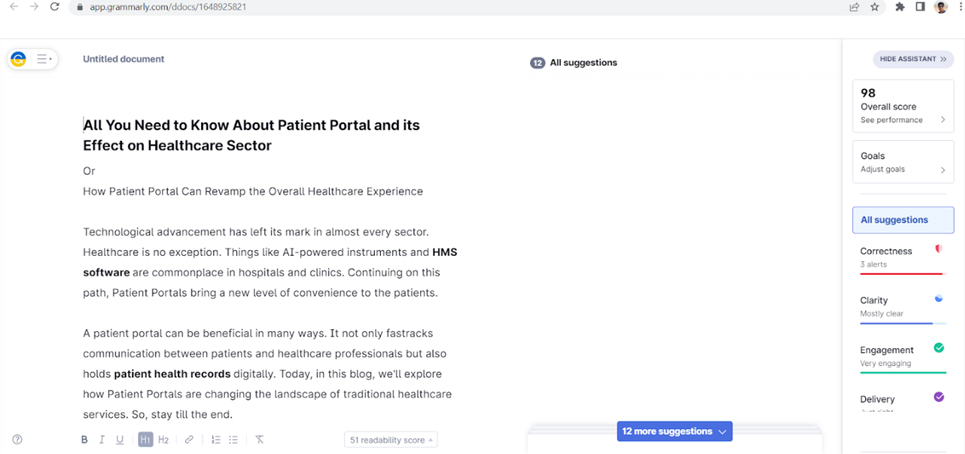How Patient Portal Can Revamp the Overall Healthcare Experience
June 30, 2022Technological advancement has left its mark in almost every sector, and healthcare is no exception. Things like AI-powered instruments and HMS software are commonplace in hospitals and clinics. Continuing on this path, Patient Portals bring a new level of convenience to patients.
A patient portal can be beneficial in many ways. It not only facilitates communication between patients and healthcare professionals but also digitally holds patient health records. In this blog, we’ll explore how Patient Portals are changing the landscape of traditional healthcare services. So, stay until the end.
What is a Patient Portal?
Primarily aimed at empowering patients to access their health data 24×7, a Patient Portal is a web-based tool that connects patients with hospitals and clinics. With the help of patient portals, you can retrieve various data points related to your health, like physician’s notes and lab reports.
Patient portals come in two main types: standalone and integrated. Standalone portals, as the name suggests, operate independently and usually provide limited information, such as lab test reports. Integrated portals are part of a larger electronic health record system. They offer a comprehensive range of information beyond just test results. This distinction is important because it can influence your choice of portal based on your specific needs. Consider what level of information you want to access when making your decision.
Some advanced portals also let you book your upcoming appointments and pay bills online, saving you valuable time. The main purpose of these portals is to boost patients’ convenience, eventually resulting in increased customer loyalty.
What Makes Patient Portals a Must-have Tool?
Patient portals benefit not only patients but also help healthcare providers streamline the entire treatment process. Here are five reasons why patient portals are a must-have tool in the modern healthcare ecosystem.
#1 Cost-effective Patient Interaction
Earlier, patients needed to make a call or a visit to avail of any medical services. Registering patient requests required human intervention, which was an inconvenience for both the patient and the medical institute.
Now, with patient portals, registering new requests is fully automated. These portals not only let patients register for checkups and testing with a few clicks of the mouse but also help institutes save money by lowering staff strength.
#2 Prioritize Communications
Patient portals have made the job of medical professionals hassle-free. A doctor or nurse can handle non-urgent communications online instead of answering the phone. Patients can post queries on the website or app, and back-end staff will answer them promptly, providing a more comfortable and convenient mode of communication.
This online communication mode will free the phone lines for the most vital calls. Also, the staff answering non-essential calls earlier can take time to sort out more important things.
#3 Minimize Visits with Telemedicine
State-of-the-art patient portals offer virtual interaction with physicians. Thus, non-essential patient visits can be reduced with teleconsultation and telemedicine.
For instance, patients with chronic diseases often need to consult with doctors at regular intervals. These routine consultations can be shifted to the online medium, reducing the need for physical visits and making the facility less crowded. This not only enhances patient comfort but also makes the facility more accommodating for emergency cases, thereby improving overall healthcare service delivery.
#4 Building a Loyal Customer Base
People these days want convenience more than anything else. Patient portals take convenience to the next level. Patients can store and access electronic medical records online and connect with doctors through secure messaging.
The ease of carrying out health checkups and tests hugely contributes to building a loyal customer base for healthcare establishments. Once a patient gets used to a portal, he hardly seeks any other option.
Concluding Words
According to Grand View Research, the global patient portal market was $2.4 billion in 2021 and is expected to grow at a CAGR of 19.3% in this decade. These figures show the rapid implementation of patient portals in the global healthcare system, which eventually reflects the usefulness of the tool.
If you want to join the patient portal revolution by enforcing one for your hospital, check out SoftClinic for an end-to-end hospital management solution.


